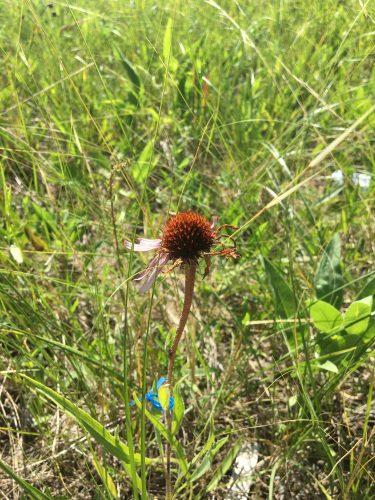Hey FLOG!
This morning started with brisk remnant phenology routes for the team—flowering is winding down, so things go more quickly with phenology by the day as more plants shift to being done flowering. In the afternoon everyone worked on independent projects, which included a fruitless search for aphids (and by “fruitless,” I mean aphidless), some pollen collection in P1, and reading up on plant community monitoring methods.
We ended the workday with a Zoom call where we heard from Scott, a former Echinacea Project team member and current grad student at UC Boulder, and current team members Drake and Devon. Scott gave a practice presentation for a talk he’s giving at the North American Congress for Conservation Biology later in the week about fire and survival, reproduction, and recruitment in small Echinacea populations. The conference is for a conservation and land management audience, which I thought was really cool—I’m always excited when I see science and management coming together because collaboration between these two “sides” is critical to effectively caring for the planet, and is really interesting to me!
Devon gave a cool update on her project, which involves investigating the probability of Echinacea seedlings occurring at varying distances from maternal plants (“dispersal kernel” was the new phrase I learned today). Amy Dykstra, a researcher who’s been a leader with the Echinacea Project on the Sling project Devon’s analyzing data from, made a good point that if maternal plants’ stalks tend to falls over, where their seedheads land might determine the distance of many seedlings from that plant. I really liked Devon’s visualizations of her preliminary findings and I’m looking forward to seeing more!
Drake’s update was good news—the transplanting into P1 stage of his project is finished, and the parasitic plants Pedicularis canadensis and Comandra umbellata are doing okay in their new common garden locations. The overall goal is to determine if these parasites are keystone species in prairies. Among other types of data collection, it sounds like there could be some clipping and sorting of biomass in Drake’s (or someone’s, maybe an extern’s?) future!



Leave a Reply